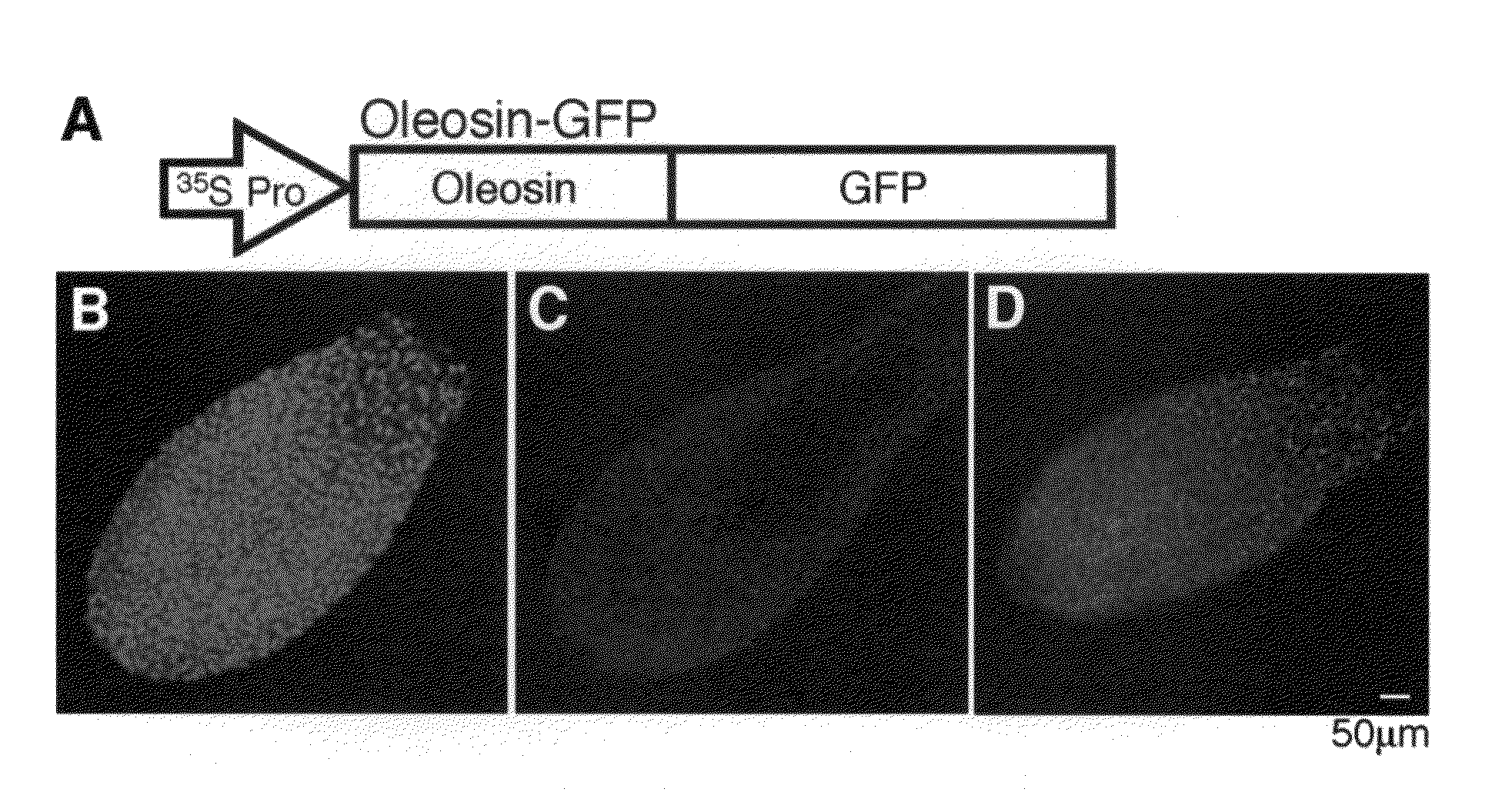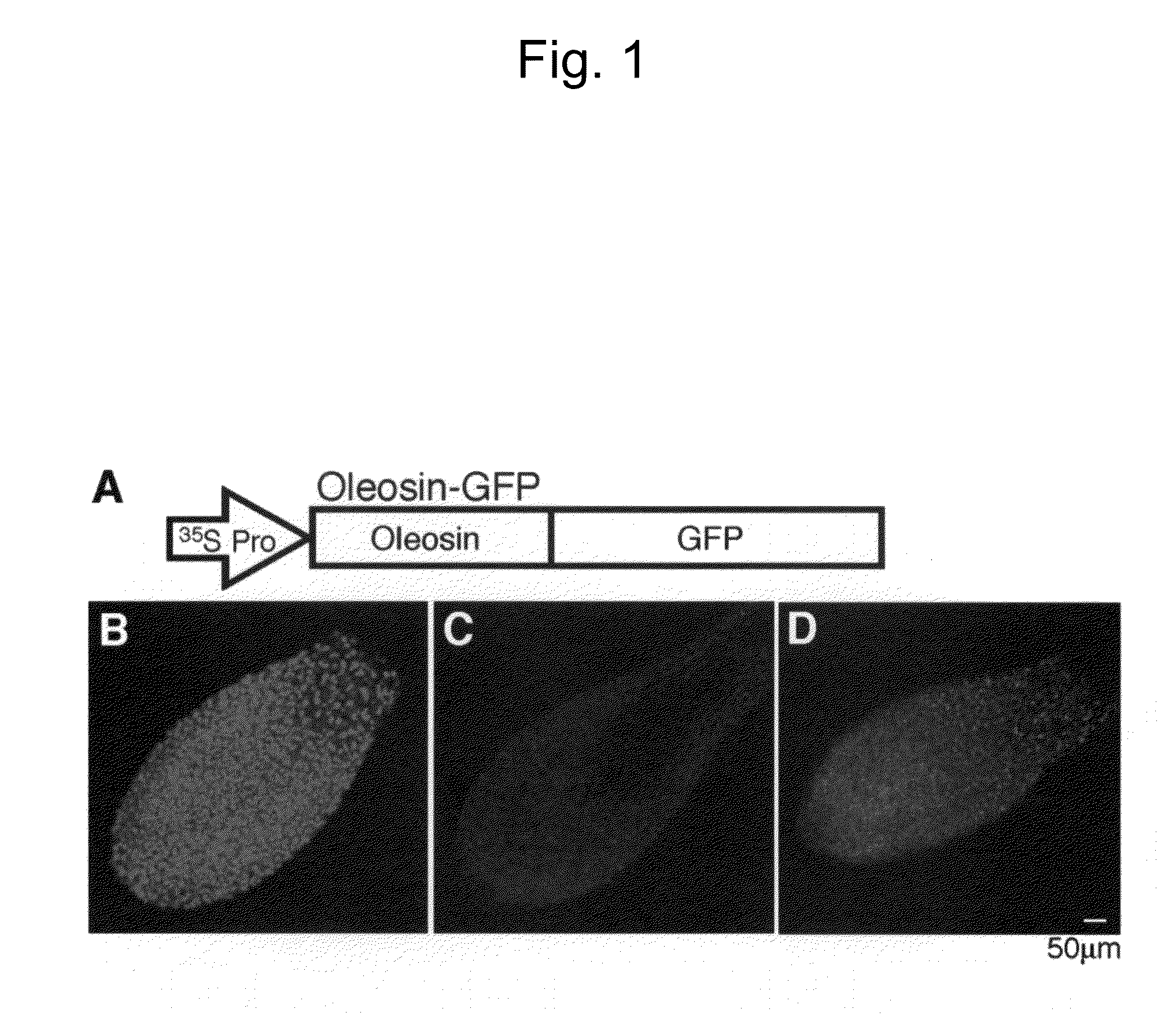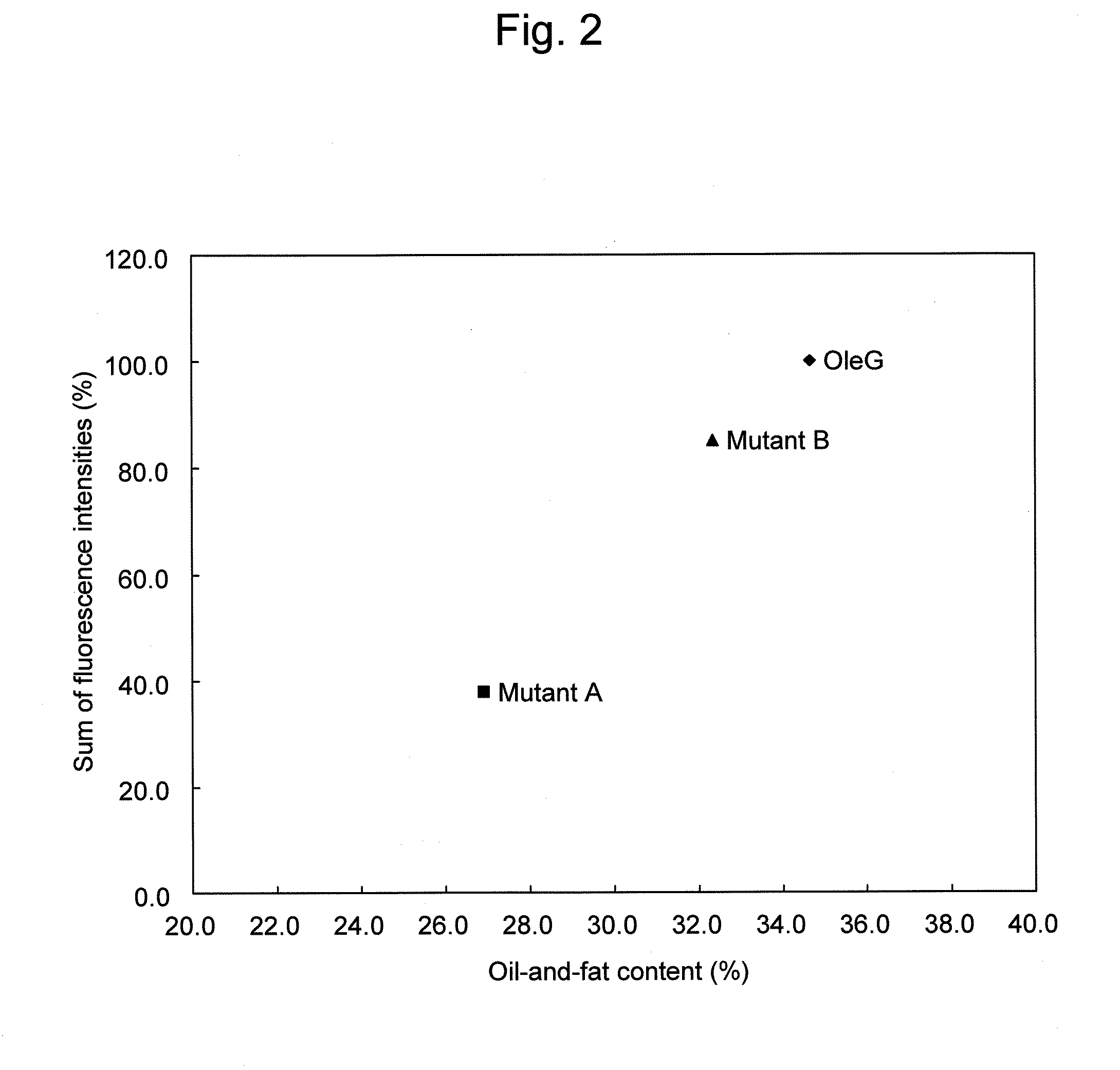Method for evaluating oil-and-fat amount in seed and method for screening for plant exhibiting varied level of oil-and-fat content
a technology of oil-and-fat content and seed, which is applied in the direction of testing food, optical radiation measurement, nuclear engineering, etc., can solve the problems of large amount of plant oil-and-fat accumulated in plant seeds, disadvantageous degradation of oil-and-fat components, and addition of lipid degradation inhibitors and processing
- Summary
- Abstract
- Description
- Claims
- Application Information
AI Technical Summary
Benefits of technology
Problems solved by technology
Method used
Image
Examples
example 1
[0080]In this example, Arabidopsis thaliana plants that are extensively used as model plants were transformed so as to express an oleosin-GFP fusion gene, and transgenic plants in which oil bodies can be observed with the aid of fluorescence were prepared. Thereafter, the resulting transgenic plants were subjected to mutation, and mutants exhibiting varied oil-and-fat amounts in seeds were identified using changes in oil body properties as an indicator. Hereafter, the concrete process of experiment and the results of experiment are described in detail.
Material and Method
[0081]The Arabidopsis thaliana ecotype Columbia was used. In accordance with a conventional technique, plants were subjected to seed sterilization and germination in sterile agar medium (½ Murashige and Skoog medium, 0.8% agar) for 7 days at 22° C. under light. Thereafter, plants were planted in a pot containing vermiculite and pearlite (1:1) and grown at 22° C. for 16 hours under light and for 8 hours in the dark.
[0...
PUM
 Login to View More
Login to View More Abstract
Description
Claims
Application Information
 Login to View More
Login to View More - R&D
- Intellectual Property
- Life Sciences
- Materials
- Tech Scout
- Unparalleled Data Quality
- Higher Quality Content
- 60% Fewer Hallucinations
Browse by: Latest US Patents, China's latest patents, Technical Efficacy Thesaurus, Application Domain, Technology Topic, Popular Technical Reports.
© 2025 PatSnap. All rights reserved.Legal|Privacy policy|Modern Slavery Act Transparency Statement|Sitemap|About US| Contact US: help@patsnap.com



